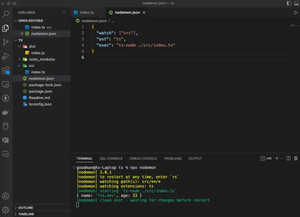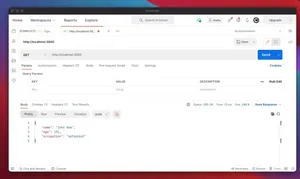Introduction
Injection attacks occur when an attacker exploits insecure code to insert or ‘inject’ malicious commands into a program, which are then executed by the application. In the context of MongoDB and Mongoose, this typically involves manipulating database queries using input from untrusted sources.
Protecting your Mongoose-based applications from injection attacks is crucial for maintaining data integrity and security. This guide will walk you through best practices and strategies to prevent such vulnerabilities.
Standard Protection Techniques
Validating and Sanitizing Input
Proper input validation and sanitization are the first lines of defense against injection attacks. Use validator functions and middleware like express-validator to check the data before it reaches your database operations. For example:
const { body, validationResult } = require('express-validator');
app.post('/user', [
body('username').isAlphanumeric(),
body('email').isEmail(),
], (req, res) => {
const errors = validationResult(req);
if (!errors.isEmpty()) {
return res.status(400).json({ errors: errors.array() });
}
// Proceed with saving the user
});Using Mongoose Schema Validation
Mongoose schemas come with built-in validation. Define your schemas to include validators for each field:
const userSchema = new mongoose.Schema({
username: {
type: String,
required: true,
trim: true,
maxlength: 50
},
...
});
// Use the schema to create a model
const User = mongoose.model('User', userSchema);Parameterized Queries
Mongoose uses parameterized queries by default, which helps prevent injection attacks. Whenever you write queries, use the built-in mechanisms like find, update, and others to ensure proper parameter handling:
User.find({ username: req.body.username }, function (err, user) {
if (err) throw err;
// Process find operation
});Implementing Access Controls
Define user roles and permissions to control data access. By limiting functionality based on roles, you reduce the risk of malicious exploitation. Tools like accesscontrol npm package can help:
const ac = new AccessControl();
ac.grant('user')
.readOwn('profile')
.updateOwn('profile');
// Check permissions
const permission = ac.can(req.user.role).updateOwn('profile');
if (permission.granted) {
// Allow profile update
}Monitoring and Logging
Keep an active log of database activities and monitor them for unusual patterns that may indicate an attack. Packages like winston and morgan can integrate logging into your application.
Regular Security Audits
Regularly reviewing your code, dependencies, and database policies help catch potential vulnerabilities. Consider using tools like retire.js or npm audit to analyze your project for known security issues.
Advanced Protection Techniques
Beyond the basics, implementing advanced security methods leading to stronger defense measures can take the form of using Object Data Modeling libraries or more complex sanitization processes.
Custom Validation Functions
For complex validation needs, create custom validator functions within your Mongoose schemas that add an additional layer of security:
const customEmailValidator = (email) => {
// Perform custom validation logic
return trueOrFalseBasedOnValidation;
};
const userSchema = new mongoose.Schema({
email: {
type: String,
validate: [customEmailValidator, 'Please provide a valid email address']
}
});
const User = mongoose.model('User', userSchema);Using Pre-Hooks for Additional Checks
Utilize Mongoose’s pre-hooks to perform actions before a query is executed. This could be used to further sanitize data or validate user permissions:
userSchema.pre('save', function (next) {
// Additional validation or modifications before saving
next();
});Securing MongoDB against Injection Attacks
Configuring MongoDB’s security settings is a critical step—in addition to above Mongoose-specific strategies—such as enabling access control and encrypting network traffic.
Conclusion
In conclusion, protecting your Mongoose application from injection attacks requires a multi-layered approach. By combining input validation, leveraging Mongoose’s features, and reinforcing database security measures, you can establish a robust defense against these threats.

